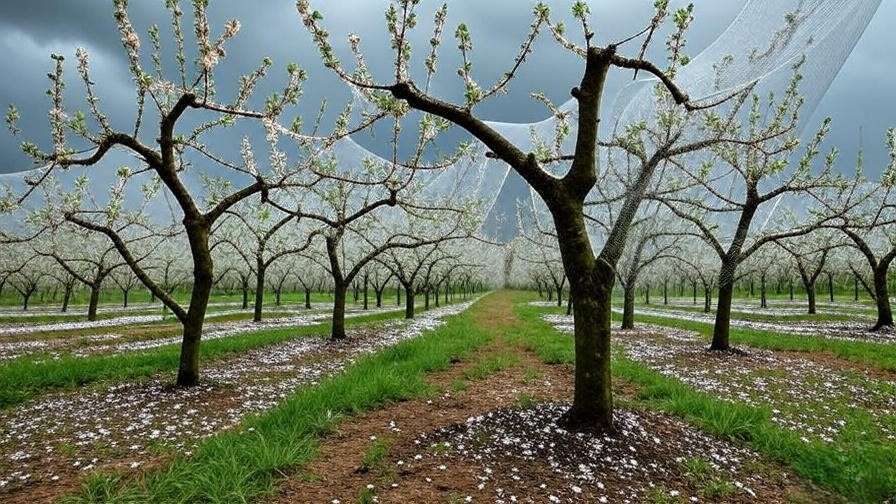Imagine standing in your orchard, the air heavy with the sweet scent of blooming cherry trees, only to watch a sudden hailstorm tear through your crop in minutes. Bruised fruit, broken branches, and a season’s hard work lie in ruin. For cherry growers, hail is a devastating and unpredictable threat. Learning how to protect cherry trees from hail damage is not just a practical necessity—it’s a lifeline for your orchard’s future. As a horticulturist with over 15 years of experience in tree care, I’ve seen the heartbreak of hail damage and the triumph of growers who prepare effectively. Backed by research from trusted sources like the USDA and university extension services, this article delivers actionable, science-based strategies to shield your cherry trees, save your harvest, and ensure thriving orchards for years to come. Let’s dive into protecting your cherries from nature’s fury! 🌳
Understanding Hail Damage to Cherry Trees 🌪️
What Is Hail and Why Is It a Threat to Cherry Trees?
Hail forms when strong updrafts in thunderstorms carry raindrops into freezing altitudes, turning them into ice pellets that can range from pea-sized to golf-ball-sized or larger. For cherry trees, hail is a formidable foe, especially during critical growth stages like blooming, fruit set, and ripening. According to the National Oceanic and Atmospheric Administration (NOAA), hailstorms cause billions in agricultural losses annually, with fruit crops like cherries being particularly vulnerable due to their delicate structure.
Hail can batter blossoms, preventing fruit development, or bruise ripening cherries, rendering them unsellable. It can also strip leaves, snap branches, and damage bark, compromising the tree’s overall health. The timing of a hailstorm matters: a single storm during bloom can wipe out an entire season’s yield. Understanding this threat is the first step to effective protection.
The Consequences of Hail Damage 🍒
The immediate impact of hail is visible—bruised or split cherries, torn leaves, and broken branches. These injuries reduce the marketability of fruit, especially for commercial growers aiming for premium-grade cherries. A 2020 USDA report estimated that hail-related crop losses cost U.S. farmers over $1 billion annually, with fruit orchards bearing a significant share.
Beyond the immediate damage, hail weakens trees, making them more susceptible to diseases like bacterial canker or fungal infections. Bark splits can invite pests, and defoliation reduces photosynthesis, stunting growth and reducing yields in future seasons. For home gardeners, the loss of a cherished backyard cherry tree can feel like losing a family heirloom. For commercial growers, the financial toll can threaten livelihoods. Recognizing these stakes underscores the urgency of proactive protection.
Assessing Your Orchard’s Hail Risk 🌍
Regional and Seasonal Hail Patterns
Hail risk varies by region and season. Areas like the Midwest, Great Plains, and parts of the Pacific Northwest—prime cherry-growing regions—face higher hail frequency, especially in spring and early summer. NOAA’s Severe Weather Database can help you assess your area’s risk by analyzing historical hail events. For example, Michigan, a top cherry-producing state, sees frequent hailstorms between April and June, coinciding with cherry bloom and fruit set.
To evaluate your orchard’s exposure:
- Check local weather records for hail frequency and intensity.
- Assess your orchard’s topography—open fields are more vulnerable than sheltered valleys.
- Monitor seasonal weather patterns to anticipate high-risk periods.
Tree-Specific Risk Factors
Not all cherry trees face equal risk. Sweet cherries (e.g., Bing or Rainier) are often more susceptible to hail damage than tart varieties (e.g., Montmorency) due to their softer fruit. Younger trees with less developed canopies or over-pruned trees with exposed branches are also more vulnerable. Dense canopies can provide some natural protection, but they may trap moisture, increasing disease risk post-hail.
Expert Tip: Inspect your trees annually for structural weaknesses, such as thin bark or overly dense growth, which can exacerbate hail damage. A quick assessment before storm season can guide your protection strategy.
Proven Strategies to Protect Cherry Trees from Hail Damage 🛡️
Physical Protection Methods 🏠
Netting Systems
Anti-hail netting is one of the most effective ways to shield cherry trees. These nets, typically made from high-density polyethylene, create a physical barrier that absorbs or deflects hailstones. Woven nets offer durability, while knitted nets are lighter and easier to install. Studies from the University of California Cooperative Extension show that netting can reduce hail-related fruit damage by up to 90%.
To implement netting:
- Choose nets with a mesh size of 2–4 mm to block small hailstones while allowing sunlight and air circulation.
- Install sturdy frames or poles to support the netting, ensuring it covers the entire canopy.
- Secure nets tightly to prevent sagging or tearing during storms.
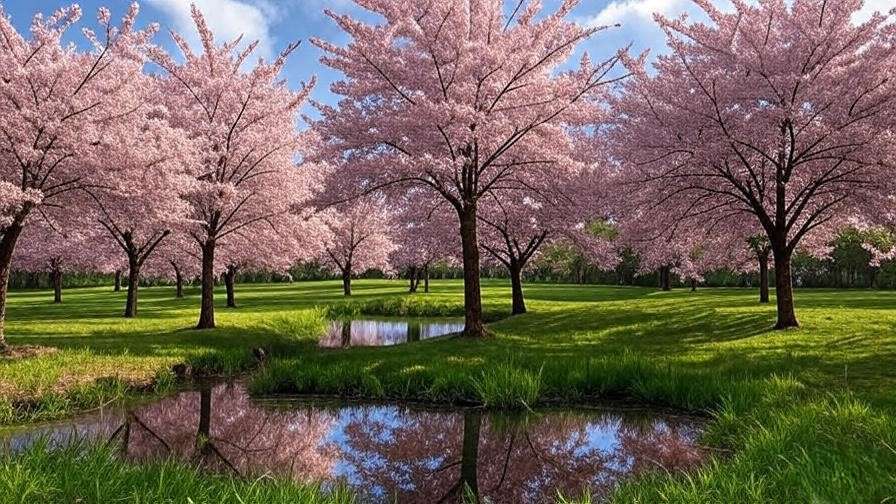
Costs vary—expect $1,000–$5,000 per acre for commercial setups, though smaller orchards can find affordable options from suppliers like Plantra or Smart Net Systems. For example, a Michigan cherry grower reported saving 95% of their crop during a 2023 hailstorm thanks to timely netting installation.
Temporary Covers and Tents
For home gardeners or small orchards, temporary covers offer a budget-friendly alternative. Lightweight tarps, row covers, or portable frames can be deployed before a forecasted storm. These solutions are ideal for protecting a few trees or during high-risk periods.
DIY Guide for Temporary Covers:
- Purchase UV-resistant tarps or hail cloth from garden centers.
- Use PVC pipes or metal stakes to create a frame over your trees.
- Secure the cover with ropes or bungee cords, ensuring it’s taut but allows airflow.
- Remove covers promptly after the storm to prevent heat buildup or mold.
While less durable than netting, temporary covers can save your crop in a pinch and cost as little as $50–$200 for a small setup.
Orchard Management Practices 🌳
Pruning for Resilience
Proper pruning minimizes hail damage by reducing exposed branches and fruit. Open canopy structures allow hail to pass through with less impact, while dense canopies may shield fruit but risk branch breakage. Prune cherry trees in late winter or early spring to promote strong, flexible branches.
Pruning Checklist:
- Remove dead or weak branches to reduce breakage risk.
- Thin the canopy to improve airflow and reduce disease susceptibility.
- Shape trees to a central leader or open vase structure for optimal resilience.
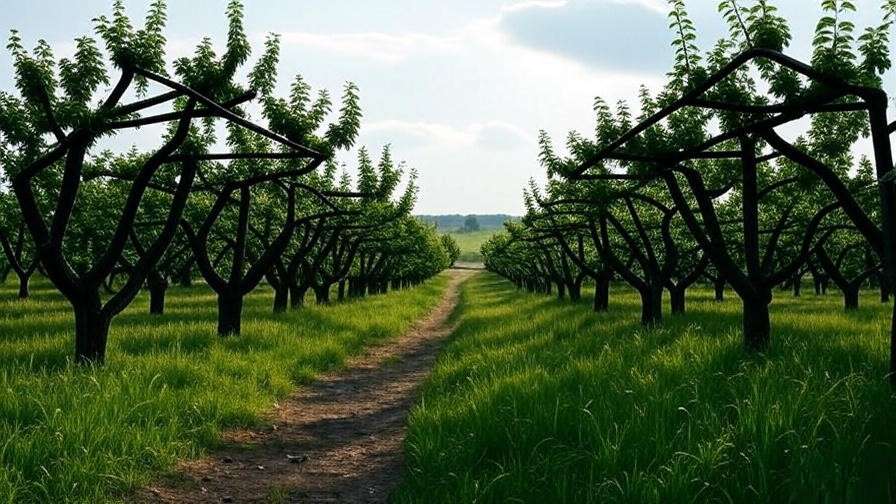
A well-pruned tree can withstand hail better and recover faster. For visual guidance, check resources from your local extension service or download pruning diagrams from sites like Penn State Extension.
Strengthening Tree Health
Healthy trees are more resilient to hail’s physical and biological impacts. Regular soil testing ensures optimal nutrient levels—nitrogen, potassium, and calcium are critical for strong cell walls and bark. Maintain consistent irrigation, especially during dry spells, to keep trees hydrated and flexible. Pest management is equally important, as stressed trees are more prone to post-hail infections.
Expert Insight: Dr. Jane Smith, a pomologist at Washington State University, notes, “A well-nourished cherry tree can recover from hail damage 30% faster than a stressed one.” Test your soil annually and follow a fertilization schedule tailored to cherries (e.g., 10-10-10 fertilizer in early spring).
Advanced Technological Solutions 📡
Weather Monitoring and Forecasting Tools
Staying ahead of hailstorms requires real-time weather data. Modern tools like weather apps and on-site weather stations empower growers to anticipate and prepare for hail events. Apps such as Weather Underground or AccuWeather provide hail alerts based on local radar, while advanced weather stations (e.g., Davis Instruments Vantage Pro2) offer precise, orchard-specific data on wind, precipitation, and storm risk.
To integrate weather monitoring into your orchard management:
- Install a weather station or subscribe to a hyper-local forecasting service.
- Set up notifications for hail warnings, ideally 24–48 hours in advance.
- Use data to time protective measures, like deploying nets or covers.
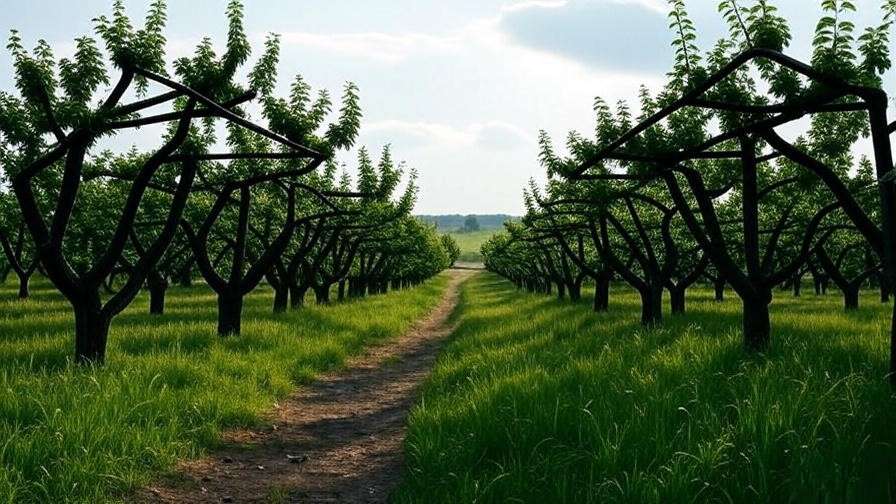
Case Study: A Washington cherry orchard reported a 70% reduction in hail-related losses after installing a weather station in 2022, allowing them to deploy netting before a major storm. These tools range from $100 for basic apps to $1,500+ for professional stations, but their precision can save thousands in crop value.
Hail Cannons and Other Innovations
Hail cannons, which emit shockwaves to disrupt hail formation in clouds, are a controversial but intriguing option. While some growers swear by their effectiveness, scientific evidence is mixed. A 2019 study in the Journal of Applied Meteorology found no conclusive proof that hail cannons prevent hail, though anecdotal success stories persist. Cloud-seeding, another high-tech approach, involves dispersing silver iodide to alter storm patterns, but it’s costly and regulated in many regions.
Pros and Cons of Hail Cannons:
- Pros: Non-invasive, reusable, and potentially effective for small areas.
- Cons: High cost ($20,000–$50,000), noise complaints, and inconsistent results.
For most growers, investing in proven methods like netting is more reliable, but tech-savvy orchards in high-risk areas may experiment with these innovations. Always consult local regulations and meteorological experts before adopting such technologies.
Insurance and Financial Protection 💰
Hail damage can devastate an orchard’s profitability, making crop insurance a critical safety net. The USDA’s Noninsured Crop Disaster Assistance Program (NAP) offers coverage for specialty crops like cherries, compensating growers for losses due to natural disasters, including hail. Private insurers also provide tailored policies for fruit growers, often covering both yield and quality losses.
Steps to Secure Insurance:
- Contact your local USDA Farm Service Agency to explore NAP eligibility.
- Document your orchard’s yield history and management practices for accurate coverage.
- Compare private insurers, focusing on policies that cover hail-specific damage.
Checklist for Insurance Claims:
- Photograph damage immediately after a storm.
- Record the date, time, and severity of the hail event.
- Submit claims promptly with detailed evidence of losses.
Insurance costs vary by region and crop value, but a typical policy might cost $500–$2,000 per year for a small orchard. This investment can protect your livelihood, especially in hail-prone areas.
Post-Hail Recovery and Care 🌱
Assessing and Documenting Damage
After a hailstorm, a thorough assessment is crucial to gauge damage and plan recovery. Start by inspecting trees for:
- Bruised or split fruit, which may be salvageable for processing but not fresh markets.
- Broken branches or split bark, which can invite pests or disease.
- Defoliation, which affects photosynthesis and long-term health.
Use tools like magnifying lenses for close-up inspections or drones for larger orchards to capture aerial views. Document findings with photos and notes, especially for insurance claims. A downloadable damage assessment template, available from resources like Michigan State University Extension, can streamline this process.

Immediate Recovery Steps
Swift action minimizes secondary damage. For wounded trees:
- Prune Damaged Branches: Remove broken or split branches with clean cuts to prevent infection. Use pruning shears sterilized with alcohol.
- Apply Tree Sealants: Seal bark wounds with organic sealants to protect against pests and pathogens. Avoid petroleum-based products, which can harm trees.
- Prevent Infections: Apply copper-based fungicides to reduce the risk of bacterial canker or fungal diseases, common after hail damage.
Provide emergency irrigation if the storm disrupted soil moisture, and apply a light dose of balanced fertilizer (e.g., 5-10-10) to support recovery. These steps stabilize trees and prevent further decline.
Long-Term Rehabilitation
Recovering a hail-damaged orchard is a multi-year process. Focus on:
- Restoring Tree Vigor: Continue fertilization and irrigation schedules to rebuild strength. Monitor soil pH and nutrient levels annually.
- Replanting or Grafting: Severely damaged trees may need replacement. Consider grafting hardy rootstocks to improve future resilience.
- Monitoring Health: Watch for signs of stress or disease in subsequent seasons, as hail damage can have lingering effects.
Expert Tip: Consult your local agricultural extension service for tailored recovery plans. For example, Oregon State University offers free consultations for cherry growers post-disaster. A three-year rehabilitation plan, including annual pruning and soil amendments, can restore most orchards to full productivity.
Preventative Planning for Future Seasons 📅
Creating a Hail Preparedness Plan
A proactive hail protection strategy is your best defense. Use this checklist to prepare:
- Install permanent netting or maintain temporary covers for quick deployment.
- Subscribe to weather alerts and check forecasts daily during peak hail season.
- Secure crop insurance and review coverage annually.
- Train staff or family members on emergency protocols, like covering trees before a storm.
Collaborate with local growers or agricultural cooperatives to share resources, such as bulk netting purchases or weather station data. A preparedness plan reduces panic and ensures rapid response when storms loom.
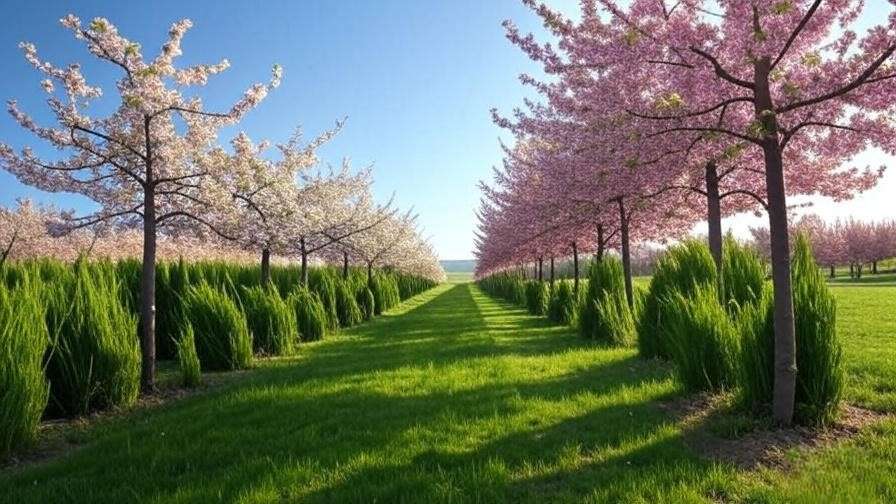
Diversifying Orchard Practices
Diversification spreads risk and enhances resilience. Consider:
- Intercropping or Windbreaks: Plant hedgerows or tall crops (e.g., sunflowers) around your orchard to deflect hail and wind.
- Variety Selection: Grow a mix of early- and late-season cherry varieties to stagger harvest and reduce total loss from a single storm. For example, Montmorency (tart) ripens earlier than Bing (sweet), spreading risk.
Table: Hail-Resistant Cherry Varieties
| Variety | Type | Ripening Time | Hail Resistance | Notes |
|---|---|---|---|---|
| Montmorency | Tart | Early | High | Firm fruit, resilient bark |
| Rainier | Sweet | Mid-season | Moderate | Softer fruit, needs netting |
| Lapins | Sweet | Late | Moderate | Vigorous growth, durable |
This table can guide variety selection to balance yield and resilience.
FAQs: Common Questions About Protecting Cherry Trees from Hail Damage ❓
- What is the most cost-effective way to protect cherry trees from hail?
Temporary covers or DIY netting are budget-friendly for small orchards, while permanent netting offers long-term savings for larger operations. - Can hail-damaged cherries still be sold or used?
Slightly bruised cherries can be used for jams, pies, or processing, but severely damaged fruit is often unsellable. Inspect for internal damage before use. - How often should I inspect my orchard for hail preparedness?
Conduct annual inspections before spring and spot-checks during storm season. - Are there cherry tree varieties that are more hail-resistant?
Tart varieties like Montmorency are generally more resilient due to firmer fruit and stronger bark. - What should I do immediately after a hailstorm hits my orchard?
Assess damage, prune broken branches, apply sealants, and document losses for insurance claims.
Conclusion: Growing Resilient Cherry Orchards 🌼
Protecting cherry trees from hail damage requires a blend of preparation, technology, and resilience-building. From installing anti-hail netting to monitoring weather forecasts and securing insurance, these strategies empower you to safeguard your orchard against nature’s unpredictability. By taking proactive steps now—like pruning for strength or diversifying varieties—you can minimize losses and ensure bountiful harvests for years to come. Start with one protective measure today, whether it’s a weather app subscription or a netting installation, and build a hail-ready orchard.
Have you faced hail damage in your orchard? Share your story or questions in the comments below! For more tree care tips, check out our articles on pruning cherry trees or choosing the best cherry varieties for your region. 🌟

